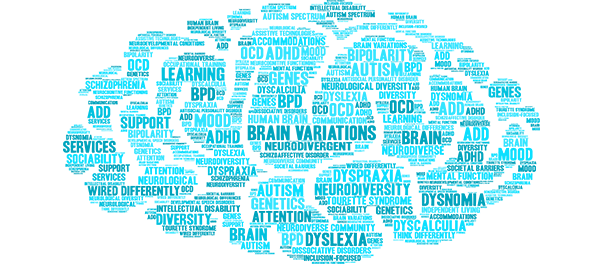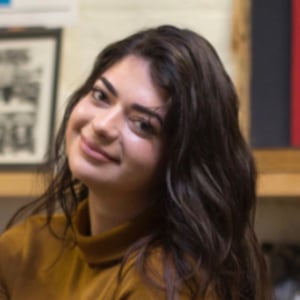What is ADHD?
The DSM-5 states symptoms of attention-deficit hyperactivity disorder are as follows:
- A persistent pattern of inattention and/or hyperactivity-impulsivity that interferes with functioning or development, as characterized by (1) and/or (2)
- Inattention
- Hyperactivity and Impulsivity
- Several inattentive or hyperactive-impulsive symptoms were present prior to age 12.
- Several inattentive or hyperactive-impulsive symptoms are present in two or more settings (e.g. home, school, work, with friends or relatives, in other activities).
- There is clear evidence that the symptoms interfere with or reduce the quality of social, academic, or occupational functioning.
- The symptoms do not occur exclusively during the course of schizophrenia or another psychotic disorder and are not better explained by another mental disorder.
Symptoms of inattention consist of:
- Failing to give close detail
- Difficulty sustaining attention
- Often not following through with instructions
- Forgetfulness
- Losing things necessary for tasks
- Difficulty organizing
Symptoms of hyperactivity and inattention comprise of:
- Fidgeting
- Leaving the seat
- Running or climbing at inappropriate times
- Talking excessively
- Blurting out answers
- Being unable to partake in leisure or wait for a turn
- Interrupting others
Toddlers and preschoolers are more likely to act like they are constantly on the go, into everything, and darting back and forth. School-age children have less intensity but tend to get up frequently, squirm in the seat, and fidget with objects.
To distinguish between an energetic child and a child with attention-deficit hyperactivity disorder, an expert diagnosis is required. Learn more about childhood ADHD to dive deeper into common ADHD myths, self-reported benefits of ADHD, and ADHD therapy options.
What is OCD?
According to the DSM-5, obsessive-compulsive disorder symptoms include:
- The presence of obsessions, compulsions, or both
- The obsessions or compulsions are time-consuming (e.g. take more than one hour per day) or cause clinically significant distress or impairment in social, occupational, or other important areas of functioning.
- The obsessive-compulsive symptoms are not attributable to the physiological effects of a substance or another medical condition.
- The disturbance is not better explained by the symptoms of another mental disorder.
Obsessions are recurrent and persistent thoughts, urges, and images accompanied by distress or anxiety that an individual attempts to ignore or suppress by performing compulsions. Compulsions are repetitive behaviors that the individual feels obligated to perform in response to an obsession. The behavior or mental acts, known as compulsions, aim to alleviate the discomfort of the individual’s distress and anxiety.
It is important to note that young children with OCD do not understand the mental processes behind their compulsions in the same way adults with OCD are able to articulate the aims of their compulsive behaviors and acts. Children are able to receive a diagnosis without identifying the reason they perform compulsions.
For example, an obsession surrounding germs can manifest itself into a compulsion of constant hygiene and cleansing rituals such as needing to wash the hands a specific amount of times. Completing the ritual helps provide a sense of control to the individual.
How ADHD Presents in OCD and Why Diagnosis is Difficult
A pediatric specialist with experience in OCD and ADHD is necessary for a proper diagnosis. Healthcare professionals need to rule out any possibilities of alternative neurological disorders. It is challenging to receive an accurate diagnosis of both OCD and ADHD, especially in children who have yet to reach important developmental milestones. ADHD diagnoses are more reliable as children age past six. As for OCD, children as young as seven develop the disorder although early and late adolescence diagnoses are more common.
Both health conditions consist of genetic influences and suggest heredity may influence the child’s likeliness of developing comorbidity. The comorbidity link between OCD and ADHD emerges as recent research examines executive functioning pathways in a child’s neurological structures. Brem et al. explore the neurobiological link between OCD and ADHD and share structural changes that exist in the basal ganglia in ADHD and OCD. The basal ganglia are responsible for motor learning and emotions in addition to executive functioning. Executive function includes memory, attention, self-control, flexible thinking, and self-control.
Depending on the severity of obsessions and compulsions, healthcare providers are more likely to begin treatment plans to target obsessive-compulsive disorder as it may noticeably affect the child’s life. Symptoms and treatments of OCD may mask the symptoms of ADHD, so it is more common for ADHD to remain undiagnosed in a child diagnosed with OCD. So although the symptoms may not share exact similarities, it is important to screen children with obsessive-compulsive disorder for attention-deficit hyperactivity disorder as well.
Therapies
Mental healthcare professionals who treat children with comorbid disorders must factor both in their treatment plan. The most common evidence-based therapies for attention-deficit hyperactivity disorder and obsessive-compulsive disorder consist of cognitive-behavioral therapy and medication. When treating a child with obsessive-compulsive disorder, healthcare providers should recommend screening for attention-deficit hyperactivity disorder.
Talk therapy is beneficial for children with OCD and ADHD who are unaware of the cognitive processes behind their compulsions. Children who are able to explore the why behind their behavior may feel more in control. Medications for ADHD and OCD differ, so therapists need to discuss medication plans with psychiatrists to ensure the pediatric patient receives appropriate medical care for an array of their symptoms.
1. Pharmacological Therapy - Medication
Stimulants such as Ritalin, Dexedrine, or Adderall are used to treat children with ADHD. Older children fare better with slow-release tablets to last throughout their school day. Nevada (2%), Hawaii (3.2%), and California (3.3%) are among the top three states with the lowest rates of medication as treatment for ADHD, according to the ADD Resource Center.
Healthcare providers recommend children younger than six rely on behavioral training before they attempt medication. In the case of OCD, selective serotonin reuptake inhibitors (SSRIs), like Prozac and Zoloft, are the first medication treatment of choice which classify as antidepressants. There are 3 FDA-approved drugs for OCD treatment in children: Zoloft, Prozac, and Luvox.
2. Behavioral Therapy - CBT
Behavioral therapy is a broad term for an array of treatments. Cognitive-behavioral therapy (CBT) is recommended and researched for effectiveness when treating OCD or ADHD. Talk therapy helps children better understand the cognitive processes behind their behaviors and how to intercept behavioral patterns that negatively impact their daily life. In certain cases, CBT for the family is beneficial so all members better understand the child’s neurodivergency.
3. Antibiotics
In rare cases, antibiotics may be prescribed if the onset of OCD symptoms occurs almost instantaneously around the time the child receives a strep throat diagnosis. Pediatric Autoimmune Neuropsychiatric Disorders Associated with Streptococcal Infections (PANDAS) is a link between strep throat infections and sudden OCD behaviors. Children with PANDAS are also more likely to experience symptoms of ADHD.
ADHD vs. OCD in Children Summary
Although ADHD and OCD do not have the same textbook symptoms, research demonstrates these neurodivergent conditions share similar neurological pathways and structures in the brain. There are overlapping behaviors where ADHD symptoms like impulsivity contribute to the compulsions and obsessions present in OCD. A child with both diagnoses is likely to partake in rituals with little understanding of why they must complete certain behaviors to feel in control.
Healthcare providers need to recommend seeing an attention-deficit hyperactivity disorder specialist when a child receives an obsessive-compulsive disorder diagnosis.
There are concerns of overdiagnosis with ADHD, yet in children with OCD and ADHD comorbidity, it is essential to screen the child for an appropriate treatment plan. There are a handful of approved and evidence-based treatment plans, most encompassing behavioral therapy and antidepressant or stimulant medication.























